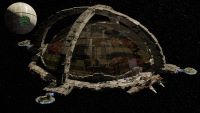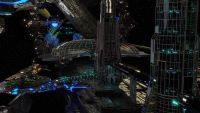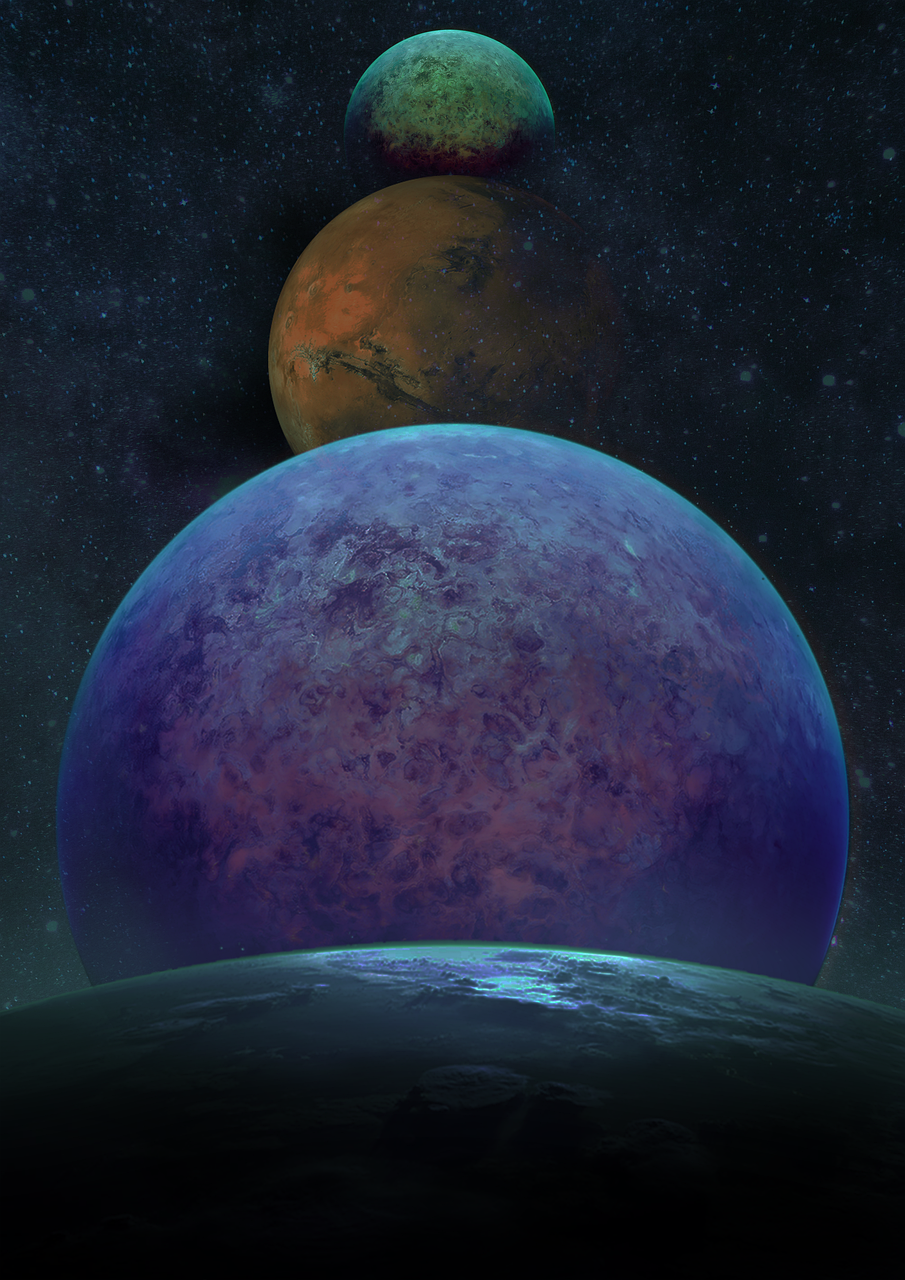Use the random number generator to complete the fields below for a randomly generated star system when needed. For more information about stars click on the link to Perfect Astronomy below.
Weightings are loosely in line with discovered amounts, however I have applied some artistic creative license decisions. Black Dwarfs are an anomaly; ‘verse isn’t old enough to have ’em yet…might be worth investigating. Only roll on the Special button if a Special star is rolled on Stellar Class, likewise for X-class objects when rolling a Special Type. Inline RNG was avoided due to lack of true randomness, and I thought it would be more fun for it to be slightly interactive. There are no O or B class stars as there are none in our local area, a low percentage of A and F stars and the rest primarily M, K and G in descending order. Any inhabitants of an A or F class star system will not be indigenous and the tech level of the planet should be forced to 8 or 9 to compensate for the conditions.
Roll 1-8
Roll 1-20
Roll 1-20
Roll 1-20
Choose your sector (1-27) ‘α‘ to ‘&’ and subsectors (1-8/1-8/xyz where x,y and z are between 0 and 9, or use RNG to generate one. Then go the sector organization table and see who your neighbors are (except for sector 14 which is under strict Ecocracy control). Sector Chart. If you need a reminder of the spatial and diplomatic layout of the near-Earth situation please refer to TATNEDS.
If you wish to generate a random position within the entirety of human controlled space use the below position finder. This will not be as random as using True RNG.
Alternatively, input your planets coordinates in the standard Galactic xyz format in light years from the Sun to find out which sector your planet is in. For known stars the Cartesian coordinate distance is commonly given in Parsecs (3.26 Light Years), use the conversion utility below if needed.
Parsecs to Light-Years Converter
Enter the coordinates in parsecs (to 2 decimal places).
Converted Coordinates in Light-Years:
X:
Y:
Z:
When entering values, ensure you have the correct sign (+/-). If you do encounter an anomaly and are flung far off-course the sector finder will not help you,
Galactic Sector Calculator
Enter the star’s coordinates in light years:
Sector Number:
Sector Name:
Distance to Earth’s Sun:
Planets, Moons, (Minable) Asteroids and Comets
| Stellar Class | Jovian | Neptunian | Terrestrial | Asteroids | Qty and Resource | Comets | Qty and Resource |
| O,B | 1-2 | 0-1 | 0-4 | 1-6 | C/U, 75/25% | 1-20 | C/U 50/50% |
| A,F | 1-3 | 1-3 | 1-5 | 1-10 | C/U/R 70/20/10% | 1-12 | C/U/R 20/40/40% |
| G,K,M | 1-3 | 2-4 | 2-6 | 2-40 | C/U/R 60/30/10% | 2-24 | C/U/R 50/25/25% |
| Dwarfs (Exc. Br & BL) | 0-2 | 0-3 | 0-4 | 1-4 | C/U/R 50/30/20% | 1-6+4 | C/U/R 80/10/10% |
| X-Class | 0-1 | 0-1 | 0-1 | 1-8 | U/R/E 40/30/40% | 0-3 | R/E 50/50% |
| Moons per planet type* | 2-40 | 1-20 | 0-5 | - | - | - | - |
| C/U/R/E = | Common | Uncommon | Rare | Exotic |
When you are able to mine exotic elements refer to the complete element table in the facilities section. If it isn't up yet request it from admin. Only a few are stable enough to be found while mining.
Asteroid and Comet Mining Table
Comets |
|||
1-8 |
Common |
Uncommon |
Rare |
1 |
Argon |
Antimony |
Actinium |
2 |
Bromine |
Arsenic |
Francium |
3 |
Calcium |
Astatine |
Niobium |
4 |
Chlorine |
Xenon |
Protactinium |
5 |
Flourine |
Tellurium |
Radium |
6 |
Iodine |
Tantalum |
Rhodium |
7 |
Phosphorous |
Krypton |
Rubidium |
8 |
Potassium & Sodium |
Radon |
Scandium |
Asteroids |
|||
1-15 |
Common |
Uncommon |
Rare |
1 |
Tin |
Barium |
Gallium |
2 |
Zinc |
Caesium |
Germanium |
3 |
Lead |
Hafnium |
Gold |
4 |
Cobalt |
Iridium |
Yttrium |
5 |
Copper |
Molybdenum |
Uranium |
6 |
Chromium |
Osmium |
Thallium |
7 |
Beryllium |
Polonium |
Indium |
8 |
Boron |
Rhenium |
Thorium |
9 |
Cadmium |
Silver |
Neptunium |
10 |
Bismuth |
Strontium |
Technetium |
11 |
Magnesium |
Titanium |
Palladium |
12 |
Manganese |
Tungsten |
Platinum |
13 |
Mercury |
Vanadium |
Selenium |
14 |
Aluminium |
Zirconium |
Ruthenium |
15 |
Roll on uncommon column |
Roll on rare column |
Plutonium |



















